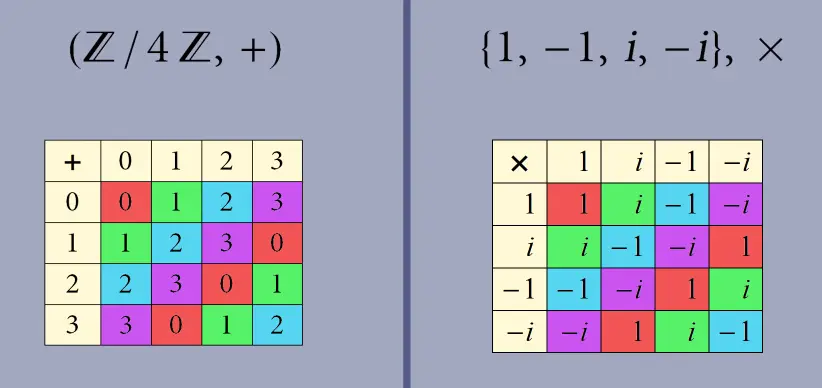An isomorphism is a reversible structure preserving map between in whatever category you’re in.
Isomorphism
Let be groups. A function is an isomorphism if:
- is a homomorphism
- is bijective
If any such an isomorphism exists, we say and are isomorphic, written .
Isomorphic means "equal shape". Isomorphic groups are structurally identical, even if their elements and operations appear different. Things that apply to one group also apply to the other.
Difference to Homomorphisms
A homomorphism only requires structure preservation (), allows for many-to-one mappings.
An isomorphism additionally requires that is bijective, meaning it is a one-to-one mapping.
- Every element in is reached (surjectivity)
- Different elements in map to different elements in (injectivity)
An isomorphism is a homomorphism that has an inverse homomorphism. Thus, isomorphic groups are structurally indistinguishable – they are essentially "the same group" written in different notation.
Properties of Isomorphic Groups
If , then:
and have the same order (cardinality).
Every structural property is shared: commutativity, cyclic nature, order of elements, …
The groups are identical up to renaming of elements.
as both are cyclic groups of order 4, although their elements and operations appear different.
For an isomorphism :
(equivalent to injectivity)
(equivalent to surjectivity)
exists and is also an isomorphism
Link to originalLogarithm turns multiplication into addition
The logarithm is an isomorphism between and :
It transforms multiplication into addition:
This satisfies all isomorphism requirements:
- Homomorphism: Preserves group operation (multiplication → addition)
- Bijective: One-to-one correspondence via as inverse
- Identity preservation:
- Inverse preservation:
